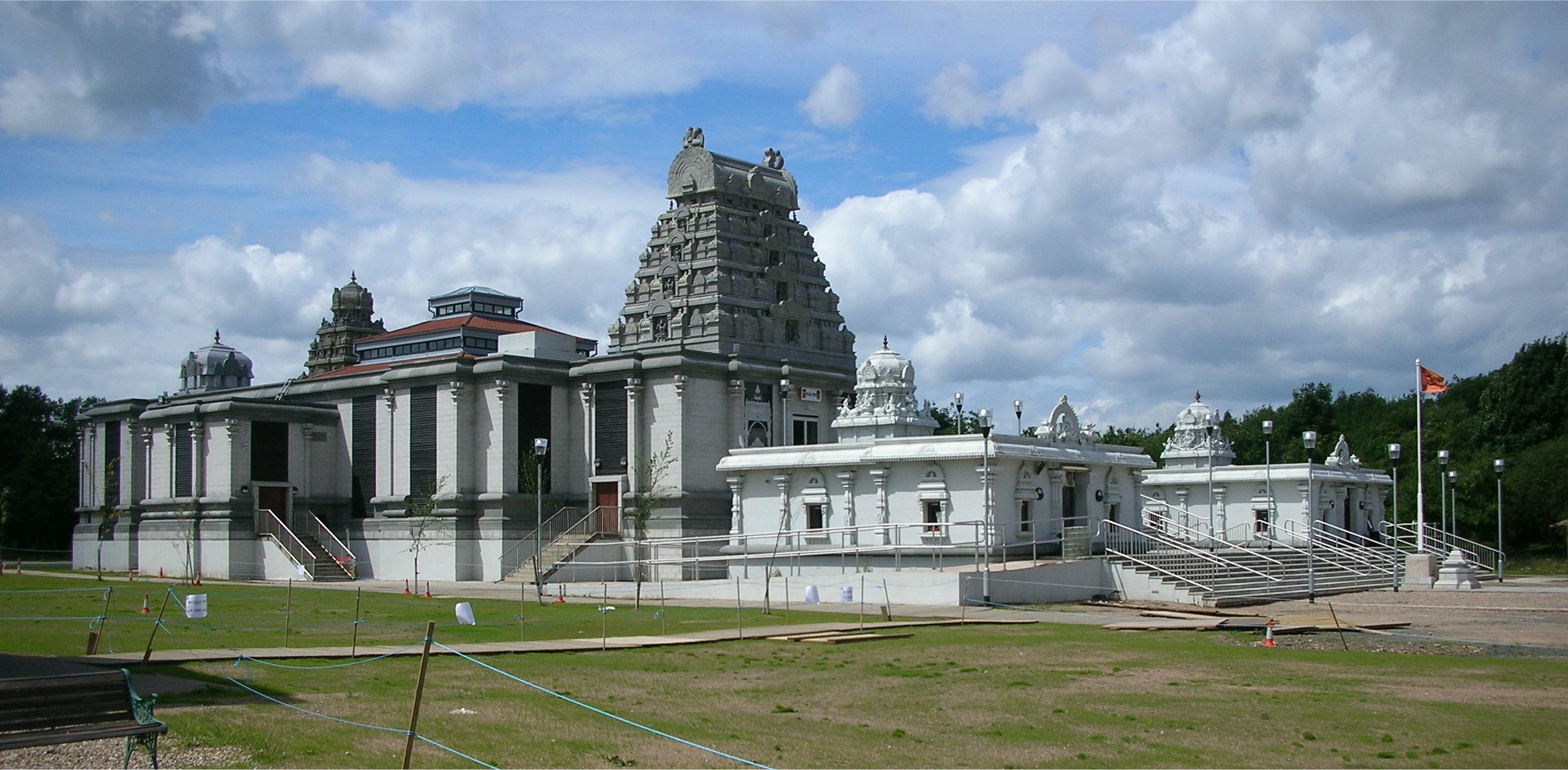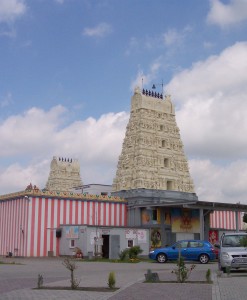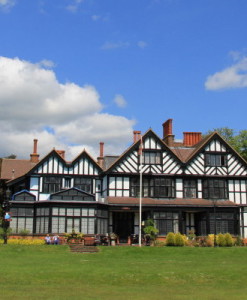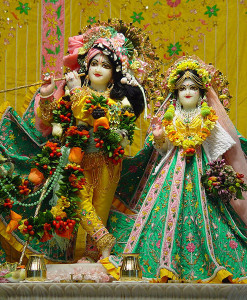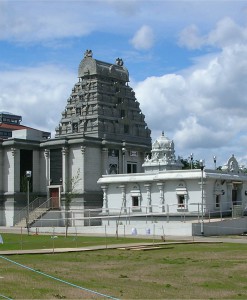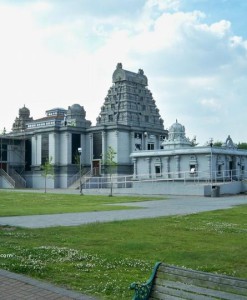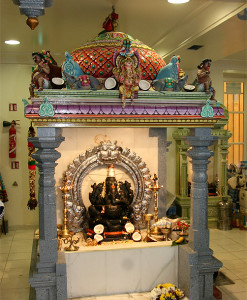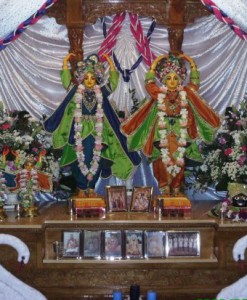No products in the cart.
The Shri Venkateswara (Balaji) Temple is one of the largest temple for the deity Shri Venkateswara (Balaji) in Europe. It is on Dudley Road East, A457 behind the Meadows School in Tividale, West Midlands,England, on the border between Tipton and Oldbury; it was designed in the style of the Tirupati Venkateswara Temple in Tirupati, India, which is the second busiest and richest religious centre in the world after the Vatican.
It opened on 23 August 2006 and was consecrated in a five-day ceremony between 23 and 27 August. The Vishnu incarnation Lord Venkateswara is the presiding deity, with two other deities either side of him in the main temple- his wife Padmavati, an incarnation of Vishnu’s wife Lakshmi, and Hanuman the monkey God featuring in the Ramayana epic. Outside there are two small Shiva temples to his sons Ganesh and Murugan, along with a hall for Navagraha or small astrological representations of nine celestial bodies. It is an increasingly magnificent, well-appointed complex, very active with resident Brahmin priests; it is not necessary to be a Hindu to visit, but shoes are removed and photographing inside is not allowed.
Sri Venkateswara (Balaji) Temple, West Midlands
- Temple History
- Architecture
- How To Reach The Temple
- Daily Poojas And Festivals
- Videos
- Additional Information
During the 1970’s our founders had a dream; a dream to create a sanctuary for prayer & meditation to Lord Venkateswara (Lord of the heaven) and to establish a Hindu spiritual centre in this part of the country to fill the vast gap in the spiritual life amongst a large section of our community. The inspiration was the Thirupathi (heaven on earth) Temple in Andhra Pradesh in South India. The charity Shri Venkateswara (Balaji) Temple as a Charitable Trust was set up in 1984 by a dedicated group of Hindus.
Plans for an ambitious scheme involving a Temple, a community centre and shrines, were prepared and the task of raising the necessary funds began in earnest. In 1996 the Millennium Commission approved the scheme for a grant by way of matching funding. The foundation laying ceremony Bhoomi Pooja (ritually sanctifying the ground) was held in 1997. In the Hindu tradition, installation of Ganesh and Shri Venkateswara Utsava Moorthy (a small statue used during processions) took place in 1999.
The installation of the main statues of Shri Venkateswara and Hanuman took place in the main temple in April 2000. In May 2000 completion ceremony of Shri Subramanya Swami (protector of family life) temple was performed. In July 2002 installation of Shri Sudashrana Swami for procession took place. Foundation ceremony for the Community Hall took place in January 2003. In July 2003 installation of Navagraha (nine heavenly bodies including the Sun, moon and the planets) was performed. The grand opening ceremony for the Community Hall took place in August 2004. In August 2006 the grand opening ceremony of the main temple was performed.
In May 2007 the ornamental pond with the statue of Ananthapadmanabha was opened. The shrine for Shiva was built and the statue (natural stone selected from the river Ganges in the foot hills of Himalayas) was installed in 2011.
The Hindu style of temple architecture evolved over many centuries has many distinctive features depending on the region and the period. Shri Venkateswara Temple reflects the South Indian Dravidian styles (Pallava, Chola & Pandya) with distinctive granite carved Gopuras (towers) incorporating many traditional stone carvings.
The East facing temple complex with shrines and the main Gopura are planned symmetrically about a truly East West axis. The access road leads one to the courtyard through the main Gopura opening on to a vista with shrines on both sides (yet to be completed) and the imposing main temple with grand ceremonial stairs in front. The community centre reflects the Buddhist style with distinctive vaulted horse-shoe roof form.
The temple complex consisting of the main temple, the shrines and the East tower covers an area measuring 450 ft long and 200 ft wide. The main temple is 166 ft long, 111 ft wide and 55 ft high to the crown. The assembly hall in the main temple is 120 ft long and 74 ft wide with space for up to 700 devotees. The site covers approximately 12 acres and has generous space for the planned seven faith hills and for open landscaped areas for reflective meditation and relaxation. Further 10 acres of landfill area is to be retained as open space mainly as nature reserve. The community Hall containing two assembly halls and a kitchen has the facility for educational, cultural and recreational activity for the community.
The overall plan for the complex includes seven symbolic hills dedicated to major faiths and as a first step, Lord Buddha’s statue, carved in wood by a local artist was installed on a hill dedicated to Buddhism in May 2001. In 2008, the Archbishop of Canterbury Dr. Rowan Williams visited the temple and formally opened the Christian Hill installing a plaque with a quote from the bible.
Coming by Bus
Number 87 bus runs frequently from Birmingham New Street Station to Balaji Temple. Check the West Midlands By Road
Coming by Train
From Sandwell & Dudley Station
Temple is 20 minutes walking distance or five minutes by taxi.
From Birmingham New Street
Number 87 bus runs frequently from Birmingham New Street Station to Balaji Temple.
Weekdays 8.30 am – 1.00 pm and 4.00 pm – 9.00 pm
Weekends 8.30 am – 2.30 pm and 4.00 pm – 9.00 pm
Some of the major festivals celebrated annually include Ram Navmi, Janmashtami, Shivratri, Holi, Ganesh Chaturthi and Diwali. Marking the Hindu New Year, Diwali is one of the grandest Hindu festivals, and attracts many visitors and devotees to the mandir.
The temple and the community centre are open to the public irrespective of one’s creed, religion and ethnic origin, for prayers, spiritual fulfilment and meditation. The plans for the future development include the creation of a landscaped park site and amenity area with emphasis on unity in diversity, spiritual, cultural and educational advancement to all.

